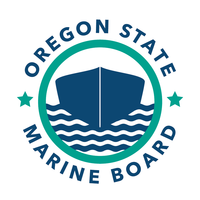

If you are an avid boater, you may have found your favorite lake or river running low. In fact, some lakes and reservoirs are thirty feet lower than this time last year. Severe low water has attributed to several boat groundings during the first week of August. Rocks or large stumps are exposed or just below the surface where generally there has been adequate water to navigate just weeks ago.
The Marine Board has been working with marine law enforcement partners to mark areas of increased safety risk. One example is Crescent Lake in Klamath County, where there’s been a significant water level drop due to drought conditions and irrigation. The Marine Board’s website has a resource page where you can find links to local reservoir levels and river gauge readings, as part of your trip planning.
The Oregon State Marine Board offers the following tips on how to have fun and stay safe:
- Never boat alone. Especially in paddlecraft. Have at least two boats and a plan if your party is separated. Always fill out a float plan or give detailed information to a friend or family member about where you’re going, when you expect to return, what clothing you’re wearing, and who’s with you.
- Motorboat operators should always navigate at a safe speed and with a sharp lookout and take time to discover what lies underneath the surface. If you are new to the waterbody, idle around and take depth readings to become more familiar with potential shallow areas. Polarized glasses help minimize sun glare and identify underwater rocks or stumps more easily.
- For rivers, stay well clear of log jams and strainers (root wads, trees, branches). Woody debris allows water through them but can entrap paddlers underwater or entangle lines on boats.
- Know your limits. Know your ability at the moment, not from what you know you’re capable of doing. Stick to rivers that are classified as I or II if you have a medical condition or are new to river running.
- Always wear a life jacket, even when on the lake or river banks. Banks become unstable.
- Check the Marine Board’s website for reported navigation obstructions. Waterways, especially rivers, are dynamic and constantly changing. The Marine Board cannot mitigate every obstruction, but through the help of our agency partners, strive to ensure safe passage for popular waterways.
If you’re involved in a grounding or other incident where there’s personal injury beyond first aid or damage over $2,000, you are required by law to complete an incident report.
Take care out there -plan, prepare and be patient. Spending some time getting your bearings will make for a safe and enjoyable experience.
###